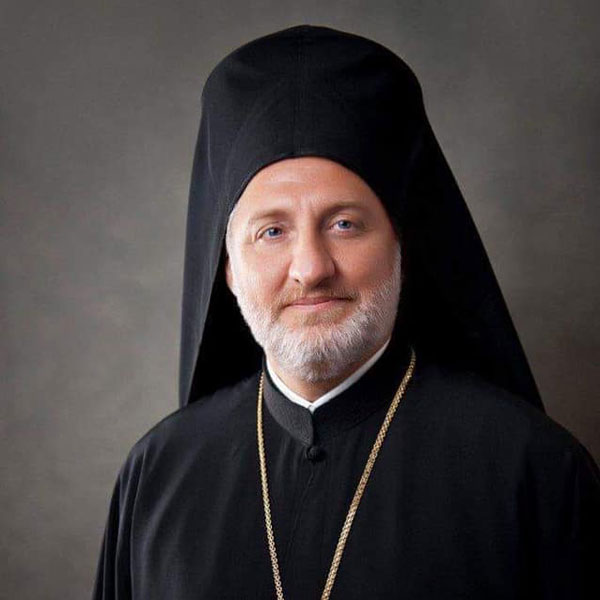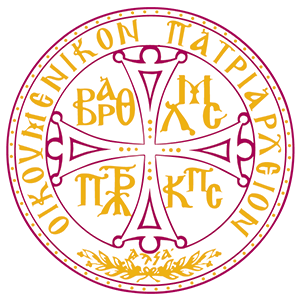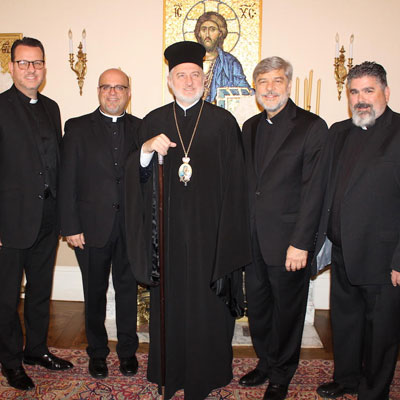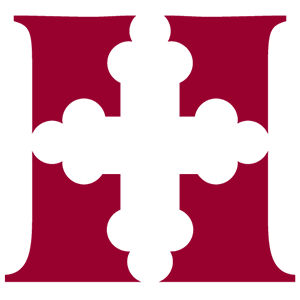Symeon the Stylite
Our righteous Father Symeon was born about the year 390 in a certain village named Sis, in the mountain region of Cilicia and Syria. Having first been a shepherd, he entered the monastic discipline at a young age. After trying various kinds of ascetical practices, both in the monastery and then in the wilderness, he began standing on pillars of progressively greater height, and heroically persevered in this for more than forty years; the greater part of this time he spent standing upright, even when one of his feet became gangrenous, and other parts of his body gave way under the strain. He did not adopt this strange way of life out of vainglory, a charge that some of his contemporaries made against him at the first: because he was already famous for his asceticism and holiness before ascending his first pillar (in Greek, style, whence he is called "Stylite"), many pious people came to him wishing to touch his garments, either for healing or for a blessing; to escape the continual vexation they caused, he made a pillar about ten feet high, and then higher and higher, until the fourth and last was about fifty feet high. The Church historian Theodoret of Cyrrhus, an eyewitness of his exploits who wrote of him while Symeon was yet alive, called him "the great wonder of the world." God gave him the grace to persevere in such an astonishing form of asceticism that multitudes came to see him from Persia, Armenia, South Arabia, Georgia, Thrace, Spain, Italy, Gaul, and the British Isles. Theodoret says that he became so famous in Rome that the Nomadic Arabs by the thousands believed in Christ and were baptized because of him; the King of Persia sent envoys to inquire into his way of life, and the Queen asked to be sent oil that he had blessed. He also was a great defender of sound doctrine, and confirmed the Orthodoxy of the Holy Council of Chalcedon for many who had been beguiled by the teachings of the Monophysites, including the Empress Eudocia, widow of Theodosius the Younger. After a life of unheard-of achievements and struggles, he reposed in peace at the age of sixty-nine, in the year 459.


 Thirty years ago, the Ecumenical Patriarchate issued an appeal to Orthodox Christians, urging prayer and care for God’s creation. Since 1989, each year on September 1st, at the inspiration of His All-Holiness Demetrios, the Ecumenical Patriarchate has opened the liturgical year with prayers for all God’s creation. Since 1992, at the exhortation of His All-Holiness Bartholomew, all Orthodox Churches have implemented the same tradition.
Thirty years ago, the Ecumenical Patriarchate issued an appeal to Orthodox Christians, urging prayer and care for God’s creation. Since 1989, each year on September 1st, at the inspiration of His All-Holiness Demetrios, the Ecumenical Patriarchate has opened the liturgical year with prayers for all God’s creation. Since 1992, at the exhortation of His All-Holiness Bartholomew, all Orthodox Churches have implemented the same tradition.
 The ecological activities of the Ecumenical Patriarchate served as the inspiration for theology to advance prominently the truth of Christian anthropology and cosmology, the Eucharistic worldview and treatment of creation, along with the spirit of Orthodox asceticism as the basis for understanding the reason for and response to the ecological crisis.
The ecological activities of the Ecumenical Patriarchate served as the inspiration for theology to advance prominently the truth of Christian anthropology and cosmology, the Eucharistic worldview and treatment of creation, along with the spirit of Orthodox asceticism as the basis for understanding the reason for and response to the ecological crisis.
 The Greek Orthodox Archdiocese of America joyfully announces that His Eminence Archbishop Elpidophoros of America appointed His Grace Bishop Demetrios of Mokissos as the Hierarchal Proistamenos of the St. Photios Greek Orthodox National Shrine in St. Augustine, FL, which falls directly under the auspices of the Archbishop.
The Greek Orthodox Archdiocese of America joyfully announces that His Eminence Archbishop Elpidophoros of America appointed His Grace Bishop Demetrios of Mokissos as the Hierarchal Proistamenos of the St. Photios Greek Orthodox National Shrine in St. Augustine, FL, which falls directly under the auspices of the Archbishop.
 His Eminence Archbishop Elpidophoros met yesterday, August 28, 2019, with the Executive Board members of the Archdiocesan Presbyters Council at the headquarters of the Greek Orthodox Archdiocese of America. This is the first meeting with the Presbyters Council officers since Archbishop Elpidophoros was enthroned as Archbishop of America in June 2019.
His Eminence Archbishop Elpidophoros met yesterday, August 28, 2019, with the Executive Board members of the Archdiocesan Presbyters Council at the headquarters of the Greek Orthodox Archdiocese of America. This is the first meeting with the Presbyters Council officers since Archbishop Elpidophoros was enthroned as Archbishop of America in June 2019.
 The Board of Trustees seeks a dynamic, visionary and strategic leader to serve as President of Hellenic College Holy Cross Greek Orthodox School of Theology. The candidate must be a practicing Orthodox Christian who possesses strong leadership, administrative, fund-raising and institutional advancement skills and will be an effective communicator with the institution’s internal and external constituencies.
The Board of Trustees seeks a dynamic, visionary and strategic leader to serve as President of Hellenic College Holy Cross Greek Orthodox School of Theology. The candidate must be a practicing Orthodox Christian who possesses strong leadership, administrative, fund-raising and institutional advancement skills and will be an effective communicator with the institution’s internal and external constituencies.